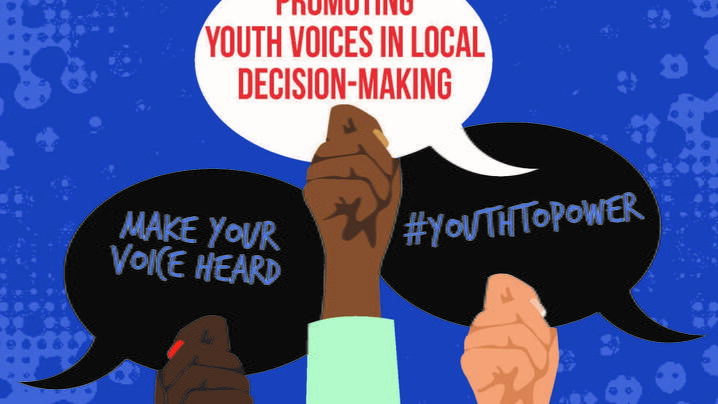
More often than not, organizations tend to overlook adequately representing the variety of age groups that exist in the communities they serve. Spanning the globe, young people between the ages of 18 and 35 face substantial barriers to entry in both political and civic engagement, even though they are the age group whose future is more likely to be affected by decisions made today. When given the opportunity to do so, youth contribute positive change in their communities and fiercely defend the democratic process.
Engaging every demographic represented in your community in the decision-making process yields outcomes that equitably serve all citizens. To help ignite diverse youth engagement in your community, ICMA partnered with the National Democratic Institute (NDI) to develop a Global Youth Council Guide to help promote youth voices in local decision-making. This step-by-step playbook takes a deep dive into youth councils, outlining their value, how to create and sustain one, good practices and common pitfalls, youth council organizational structure, building a global peer council network, and global case studies to reference along the way.
Youth Councils and Their Value
Youth councils garner collaboration between young people and the governing bodies that serve them in various decision-making processes. Youth councils enable young people to take a more active role in decisions regarding programs and policies impacting them, rather than being passive recipients of these services. This type of early engagement in the public sphere can have unmatched benefits for all youth, especially those with diverse identities who generally do not enjoy a seat at the table. Research reveals that the lasting impacts of such youth engagement is integral to an individual’s sustained involvement in the democratic process. Not only do youth councils add value to youth, but decision makers can enjoy the relatively low-cost nature of youth councils as a means to gather information on young constituents’ needs, which equips public officials with the tools required to produce polices that are tailormade for their community.
Creating and Sustaining a Youth Council
Through NDI and ICMA’s extensive research and interviews with municipal and youth council representatives, six contributing factors emerged as determining the success of getting a youth council off the ground; legal regulations, decision-maker buy-in, community support, prior youth engagement, inclusive and accessible pathways, and financial resources. Truly accomplished youth councils take that good foundation a step further by utilizing the initial spark of an innovative idea or policy recommendation as a catalyst to build support by engaging youth constituents, community members, and officials through creative means of communication. In addition to capitalizing on buy-in from youth, decision-makers, and the community at-large, the overall longevity of a youth council largely depends on the strategic planning it puts into specific projects and initiatives, and its ability to administer essential resources to execute those projects.
Good Practices and Common Pitfalls
During the process of creating a youth council, learning from the successes and mistakes of existing youth councils will give yours the advantage it needs to be off to the best start possible.
Good practices to keep in mind when starting a youth council include:
- Diversifying recruitment sources so the council is more representative of the youth population it serves.
- Designating a liaison for the youth council within the relevant government office who can access resources and share information between the two groups.
- Securing decision-maker buy-in across government sectors and institutions, forming committees within the youth council based on priority policy areas.
- Investing in training and capacity-building for youth councilmembers to equip them for success.
- Developing consistent internal procedures to streamline operations.
- Curating policy recommendations and activities that directly respond to community needs.
- Having youth councilmembers take the lead in meetings with decision-makers to reinforce youth leadership.
Common pitfalls to avoid include:
- Underestimating the level of commitment and effort required to successfully operationalize a youth council.
- Low funds and resources.
- A lack of political support.
- Public lack of understanding of the youth council mechanism.
- The youth council inadvertently reinforces existing exclusive structures and norms.
- No authority given to the youth council.
- No follow through on even the smallest of gains, which can result in widening the existing gaps for sustained youth political engagement.
Lessons Learned Around the Globe
In addition to keeping the good practices and pitfalls in mind, utilizing lessons learned from youth councils around the globe is an invaluable resource in both beginning and sustaining a healthy youth council. Youth councils can benefit from connecting with peer youth councils domestically and globally to gather inspiration and ideas for effectively structuring their work and undertaking new projects. One illustration of peer youth council networking is when NDI facilitated exchange calls between Moroccan and American youth councils to help with capacity building of the Moroccan council. Such networking can assist youth council members in learning from each other’s experiences by talking shop to determine everyday practices and solutions to problems that many councils may face at some stage in their development. To supplement this type of networking, NDI and ICMA curated global case studies of youth councils from Belgium, Costa Rica, Kosovo, Morocco, Sierra Leone, and Turkey.
Engaging youth in your community through a robust youth council will produce more positive outcomes for all residents and for the future of your community at-large. By adding the Global Youth Council Guide to your toolbox, you can help bring youth to power in your community and give this underrepresented demographic the seat at the table they deserve. Check out this helpful guide, also available in French, Spanish, and Arabic, in addition to other helpful resources through ICMA’s publication and resource hub.
New, Reduced Membership Dues
A new, reduced dues rate is available for CAOs/ACAOs, along with additional discounts for those in smaller communities, has been implemented. Learn more and be sure to join or renew today!
